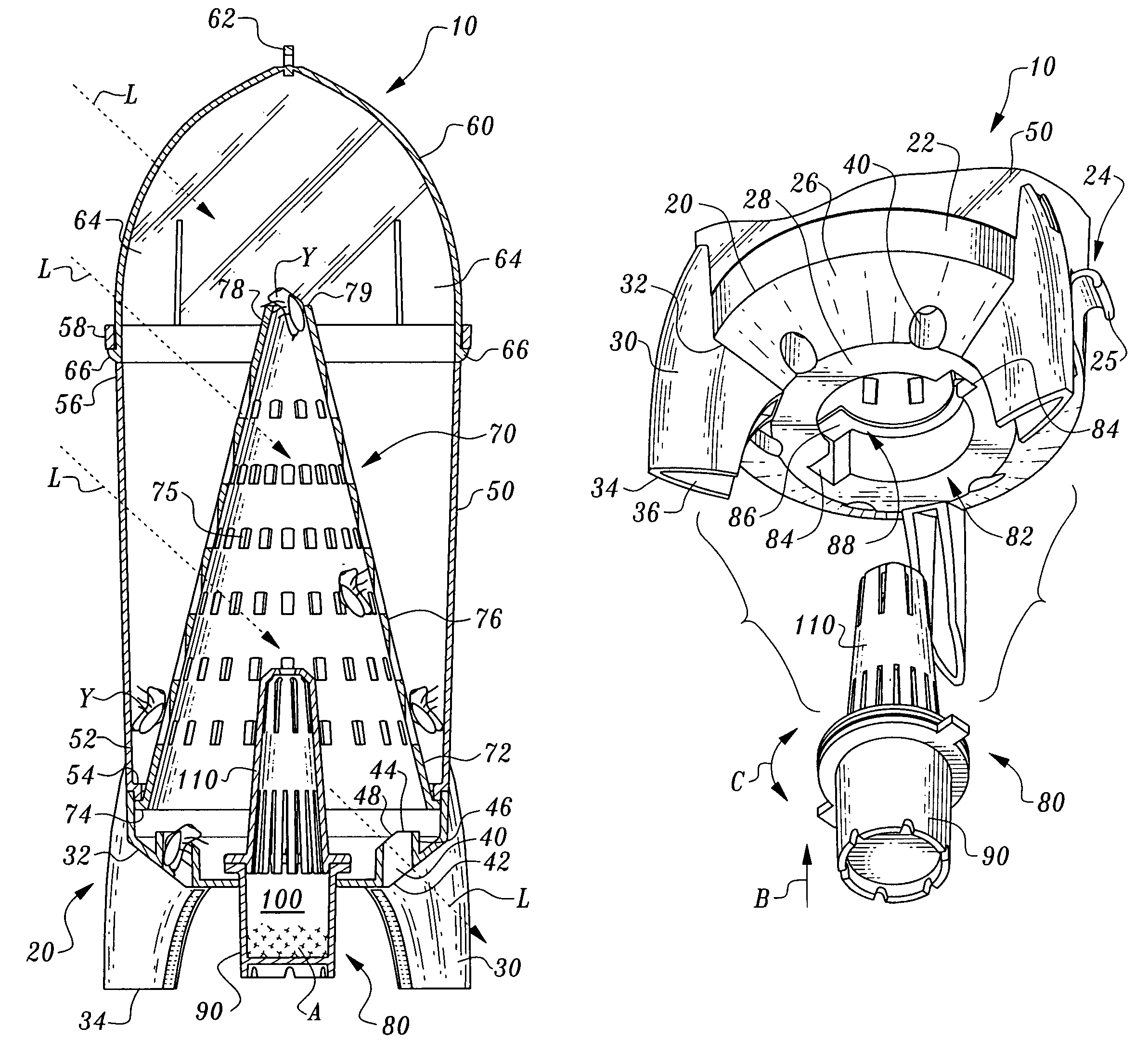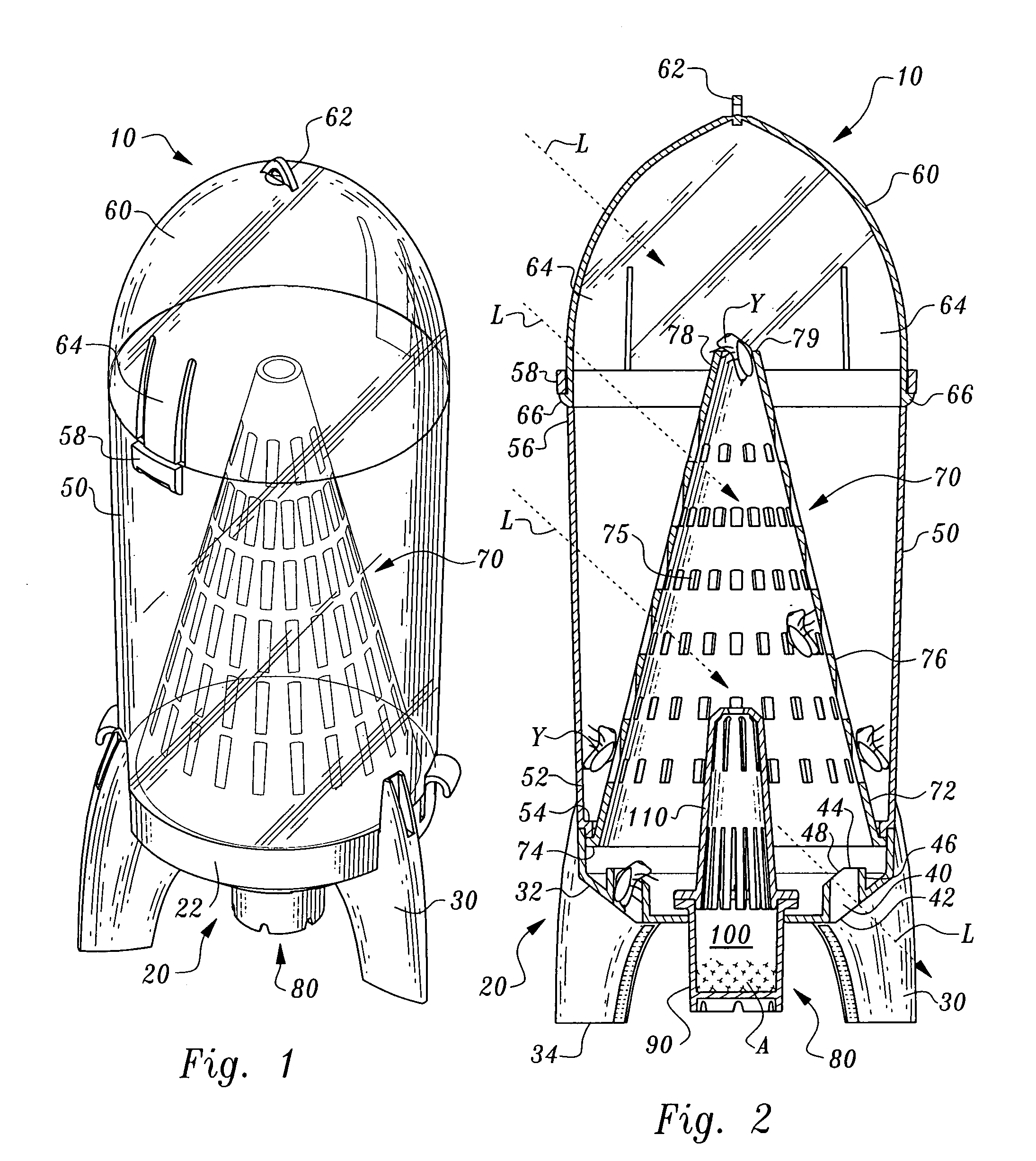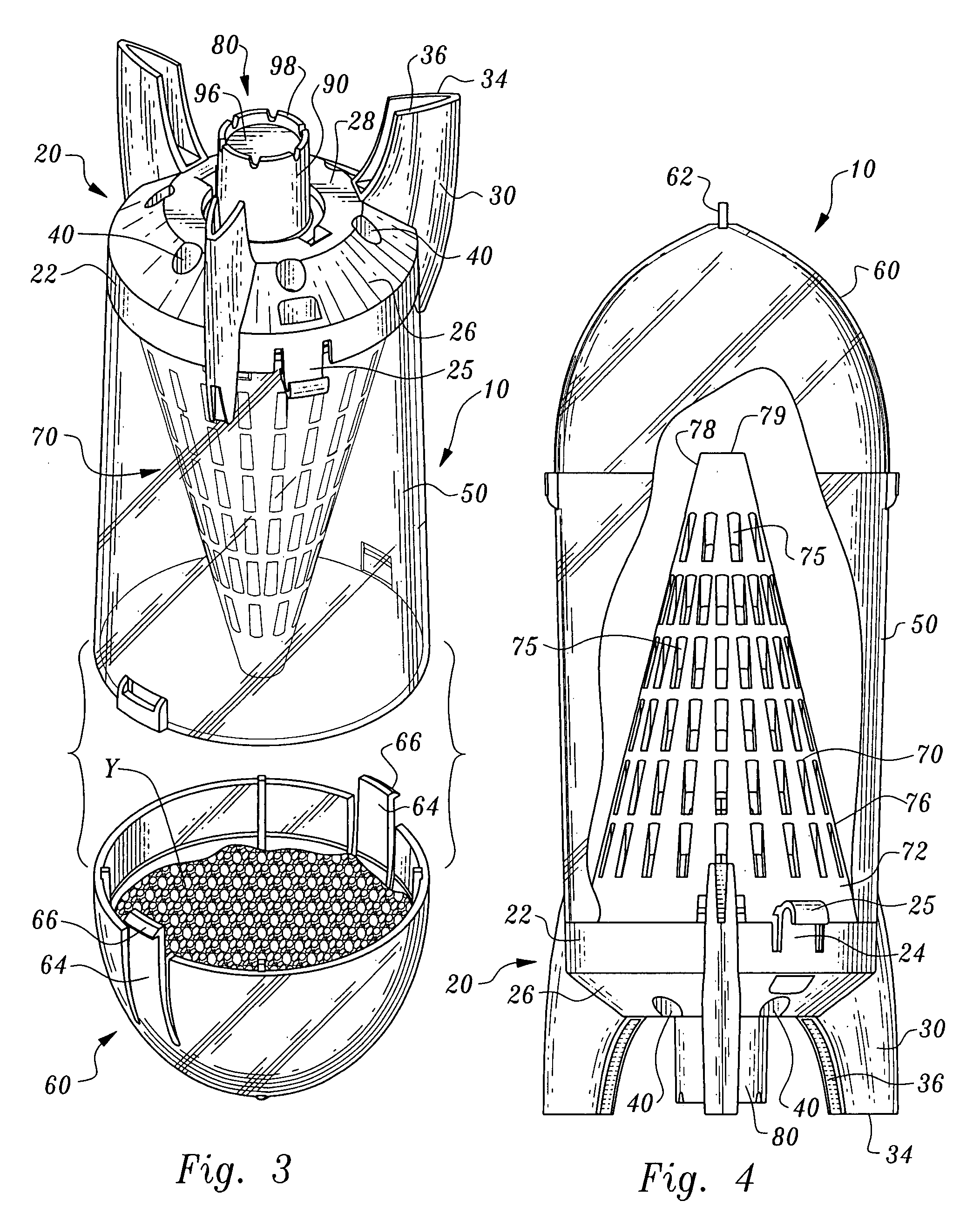Free-standing flying insect trap with removable cartridge
- Summary
- Abstract
- Description
- Claims
- Application Information
AI Technical Summary
Benefits of technology
Problems solved by technology
Method used
Image
Examples
Embodiment Construction
[0033]Referring to the drawings, wherein like reference numerals represent like parts throughout the various drawing figures, reference numeral 10 is directed to a trap for capturing pests, and particularly configured to capture yellowjacket wasps Y or other flying insects. The trap 10 is configured to draw the yellowjackets Y or other pests into the trap 10 and hold the yellowjackets Y or other pests therein until they die, typically from dehydration. The trap 10 is configured so that trapped yellowjackets Y can be removed, such as when the trap 10 is full, so that the trap 10 can continue to be used. The trap 10 preferably utilizes an attractant A to draw the yellowjackets Y into the trap 10. This attractant A is preferably provided within a removable cartridge 80, so that when the attractant A is depleted, a new cartridge 80 can be substituted for the original cartridge 80 so that the attractant A is refreshed and the trap 10 is renewed to capture additional yellowjackets Y.
[0034...
PUM
 Login to View More
Login to View More Abstract
Description
Claims
Application Information
 Login to View More
Login to View More - R&D
- Intellectual Property
- Life Sciences
- Materials
- Tech Scout
- Unparalleled Data Quality
- Higher Quality Content
- 60% Fewer Hallucinations
Browse by: Latest US Patents, China's latest patents, Technical Efficacy Thesaurus, Application Domain, Technology Topic, Popular Technical Reports.
© 2025 PatSnap. All rights reserved.Legal|Privacy policy|Modern Slavery Act Transparency Statement|Sitemap|About US| Contact US: help@patsnap.com



